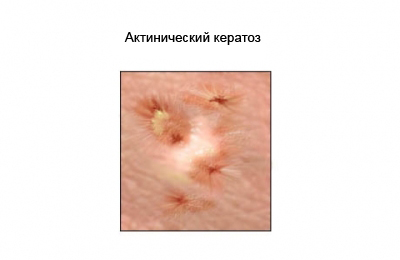Actinic keratosis
Description actinic keratoses
Actinic keratosis (AK) It is a precancerous skin growths. He appeared on the sun-damaged areas.
Ultraviolet radiation (UV) damages the skin. The skin reddens, slough, and shows spotty areas. These portions, usually, pink, but there may be gray. These lesions are more common in older men. Probably, it is related to professions, associated with prolonged exposure to the sun.
Actinic keratosis lesions are benign (noncancerous). They can sometimes convert to squamous cell skin cancer. This cancer is surgically removed. Actinic keratosis leads to the development of skin cancer around 1 case of 1000. Patients, who have many sites, affected by actinic keratosis have high chances of getting skin cancer.
Lots, Perhaps struck by actinic keratosis can remain unchanged, spontaneously pass, or progress in the development of skin cancer. The fate of any one AK is impossible to predict. People with sun-damaged skin should undergo periodic examination by a dermatologist for skin cancer.

Causes of actinic keratoses
The cause of actinic keratoses is prolonged exposure to the sun.
Risk factors for actinic keratosis
Factors, that increase the likelihood of actinic keratosis:
- Bright skin;
- Long periods of exposure to the sun;
- Professional Travel or other activities,associated with exposure to the sun.
Symptoms of actinic keratosis
The presence of the following symptoms does not always indicate the presence of actinic keratoses . These symptoms may be caused by other disorders:
- Spotted, red and white, patches on the skin, high occurrences of sun;
- Rough, scaly, or horny spots on exposed skin.
Diagnosis of actinic keratoses
To diagnose the disease, you must first be examined by a dermatologist. To search for skin cancer may be biopsied.
Treatment
Depending on the skin condition can be assigned to different treatments.
Surgical removal
Some damage can be cleaned with a scalpel. If there is a suspicion of cancer, the biopsy specimen will be sent for examination.
Krioxirurgija
Treatment of skin with liquid nitrogen removes dead cells. In their place the new grow.
5-fluorouracil cream (5-FU)
The cream is applied twice a day for 2 – 4 weeks. 5-FU selectively removes cell, affected actinic keratosis, and naih site can grow normal skin. During treatment, it may be temporary redness and stiffness. The worse the reaction, the better the end result. This type of treatment is used in the case of actinic keratosis provrezhdeniya large areas of skin.
Chemical peeling
Various acids can destroy superficial layers of damaged skin. In their place grows a normal healthy skin.
Fotodinamicheskaya therapy (FDT)
In this case a chemical substance, 5-aminolevulinic acid. The acid is applied to the damaged skin, and cells exposed to light, keratosis damaged destroyed.
Imiquimod
This cream. It is applied to the damaged area and creates a local immune response.
Diclofenac gelь
It is used topically.
Prevention
To reduce the risk of developing actinic keratoses, necessary:
- Avoid exposure to the sun;
- Wear long-sleeved clothing, long pants or a long skirt, headdress, when it's sunny, especially in the middle of the day;
- Use a sunscreen with an SPF of at least 15. The use of sunscreen reduces the rate of occurrence of actinic keratoses on 50%.
